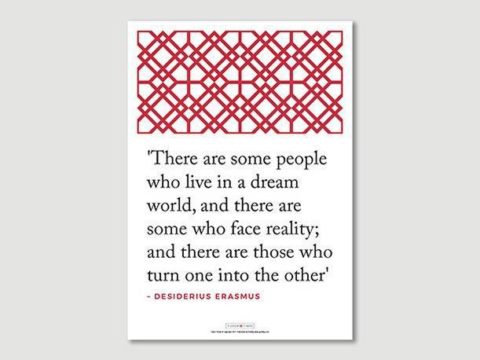Mary, Queen of France: Life Story
Chapter 12 : Royal Visits
Sometime in 1519, Mary bore another daughter, Eleanor, later Countess of Clifford. From October to December of that year, Mary was again living at court, as evidenced by her ‘livery’ or daily food allowance, detailed in the king’s accounts. Along with Henry, Katharine and Princess Mary, she was allocated one breakfast, and she is named with them at the top of the list. Suffolk comes in the third grouping, after the Cardinal.
During early 1520, plans were being made for one of the most impressive and extravagant, if least useful, spectacles, of Henry’s reign – the summit with King François and Queen Claude at Ardres, known as the Field of Cloth of Gold. From the outset, Mary and Suffolk were included as key members of the English royal party. In March 1520, Wolsey chased Suffolk for a list of the Suffolks’ expected attendants, and the number of horse which would be required.
Suffolk sent back a list, apologising for the delay, and mentioning that Mary had been ill with a pain in her side. From the wording of his letter, it is clear that this was a chronic condition. He apologised for having been in London twice without calling on Wolsey, but said that on both occasions Mary had been so ill, she had summoned him to return to Croydon, where they were staying.
Fortunately, she was sufficiently recovered to sail with Katharine and Henry, arriving at Ardres in early June. As part of the festivities, it had been agreed that the queens of England and France would each host a dinner for the king of the other country. Mary seconded her sister-in-law at the meal – we can only speculate on the conversation she had with François after five years. She was still considered beautiful, and he was an even more notorious philanderer than he had been previously.
Her meeting with her former step-daughter, Queen Claude, and François sister, Marguerite, Duchess of Alençon, no doubt brought back many memories. The French ladies did not speak English, and Katharine was not a great French speaker, so Mary was probably in demand as an interpreter. On one occasion, Henry and Mary dined in the French camp, without Katharine, Henry with his counterpart, and Mary with Claude. The entertainment continued with François and Henry disguising themselves as German soldiers.
Once the summit at Ardres was completed, Henry, Katharine and Mary travelled on to Gravelines, Flemish territory, there to meet with Katharine’s nephew, Mary’s former betrothed, Charles. Charles was now more than Archduke of Austria, Duke of Burgundy and Prince of Castile. He was King of Spain and Holy Roman Emperor, Charles V. Mary may already have met him during the brief visit he paid to England, just before the embarkation for the Field of Cloth of Gold, but now was her chance to know if she had made the right choice in marrying Suffolk.
Charles was accompanied by his aunt, Marguerite of Austria, and the meeting was treated far more as an intimate, family gathering, than the meeting with the French had been. It may have been a slightly embarrassing meeting for Suffolk and Marguerite. The story that she intended to marry him had scandalised Europe in 1513, and perhaps contributed to Maximilian’s reluctance to complete the marriage between Charles and Mary.
In 1522, Emperor Charles paid a state visit to England. This was the most extravagant event of Henry’s reign to take place on English soil, and Mary and Suffolk played their parts in the endless round of junketings. One can only wonder whether the Emperor regretted his loss of Mary as a bride. He was however, accompanied by his step-grandmother, Germaine de Foix, who had married Ferdinand II of Aragon, and was thus Katharine of Aragon’s step-mother. The still-youthful Germaine was widely thought to be Charles’ mistress.
Mary, amongst the other ladies, was issued with a black velvet bonnet and a gold coif, trimmed with ‘tristram knots’.
However well the royal families had got on at the Field of Cloth of Gold, the French were still dilatory in paying Mary’s dower. This meant that she and Suffolk were in permanent debt to Henry. Henry did not press them particularly hard, but the matter was brought up from time to time, to make them feel their obligation.
Matters became worse from 1522, when despite the fine language of the Field of Cloth of Gold, England and France were intermittently at war. In March ships carrying wine from Bordeaux for Mary and Suffolk (amongst others) were held at Bordeaux, despite the customs duty having been paid. The usual bureaucratic excuses were offered, but it was taken by England as a hostile act.
In 1523, Suffolk led a force into France – initially successful, the campaign failed as England could not supply the huge amounts of money and equipment required to keep an army of occupation in the field. It may have been this disastrous campaign that damaged Suffolk’s relationship with Wolsey – the Cardinal, whose brilliant planning had made the 1513 campaign a success. Wolsey was hampered by the impossibility of raising taxation, but Suffolk missed his chance of glory, and Henry took some time to be appeased over the duke’s perceived failure.
Payment of arrears of the dower were part of the negotiations with France that concluded the war in the mid-1520s, when the English alliance with Charles V against France broke down and Henry was obliged to seek peace.
References to Mary become fewer from this time onward. Her first son died during 1522, which must have been a great grief to her, not really healed by the birth of a second son the following year, also called Henry.
Mary, Queen of France
Family Tree


